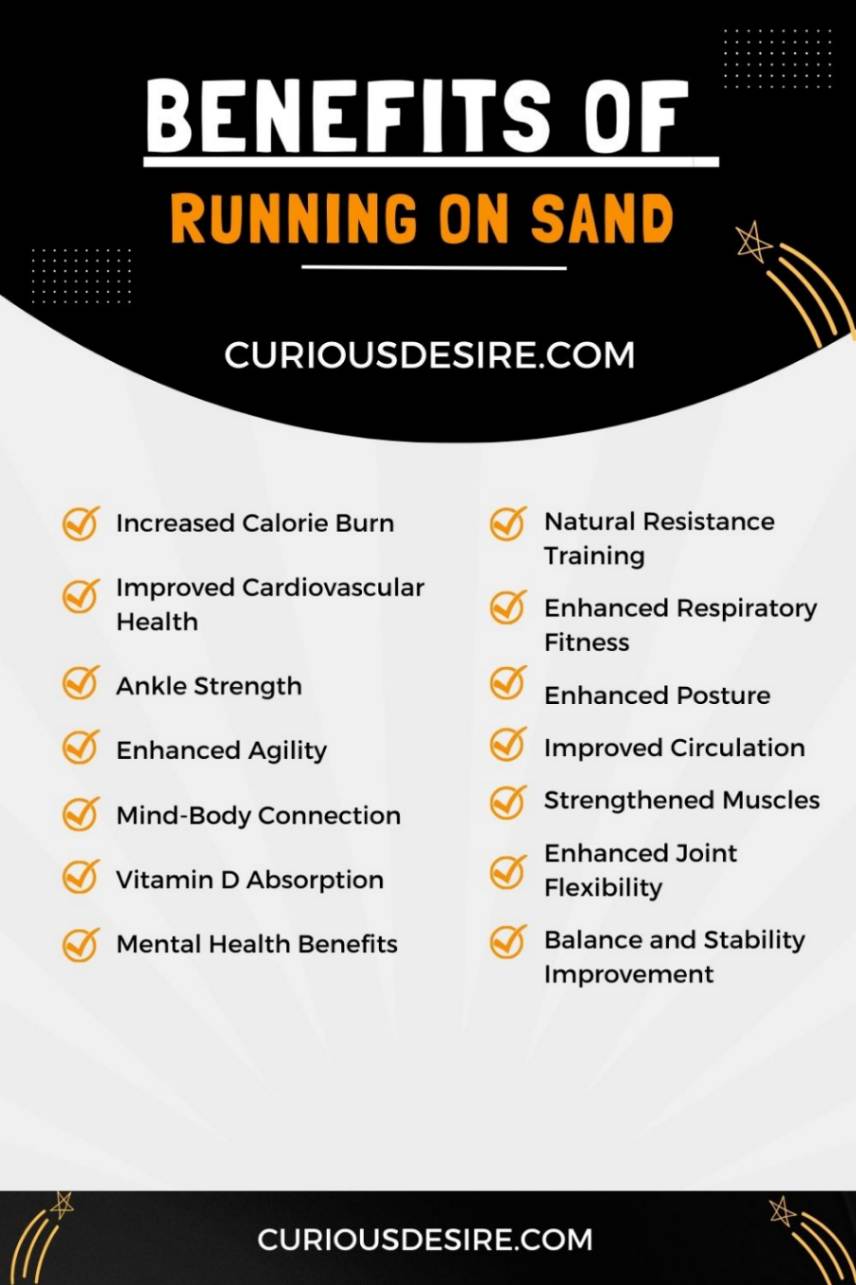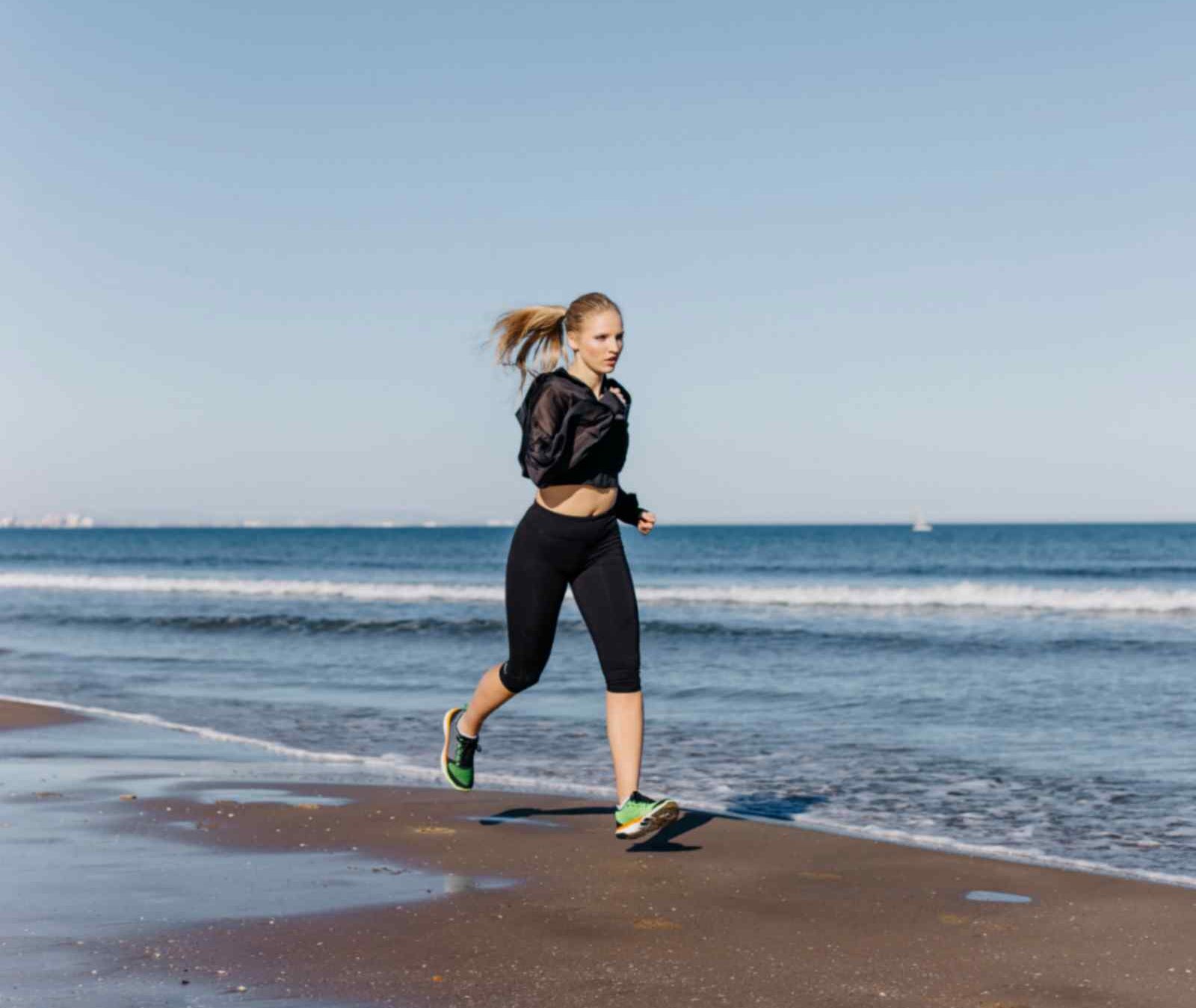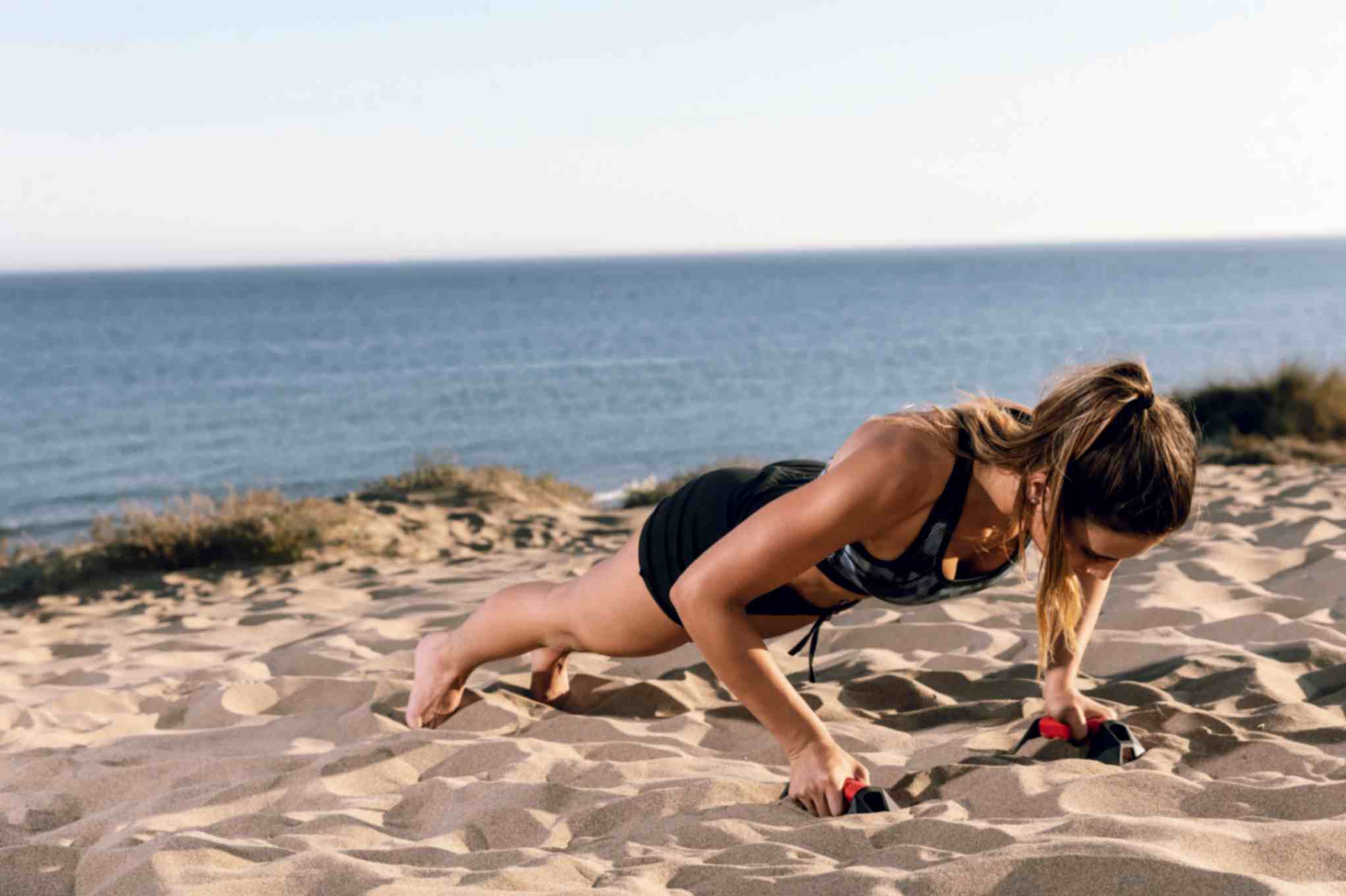Here are the top 5 common benefits of running on sand:
- Increased Calorie Burn
- Improved Cardiovascular Health
- Strengthened Muscles
- Enhanced Joint Flexibility
- Balance and Stability Improvement
Benefit 1: Increased Calorie Burn
Benefit 2: Improved Cardiovascular Health
Benefit 3: Ankle Strength
Working out on sandy surfaces boosts ankle strength because the uneven and constantly shifting sand demands more effort from the muscles around your ankles.
A study discovered that activities on sand lead to increased muscle engagement in the ankle area compared to firmer surfaces. The constantly shifting sand acts as a natural resistance, engaging the muscles around your ankles.
This engagement helps to strengthen these muscles, promoting better support and reducing the risk of injuries.
Imagine the sand as a natural gym for your ankles! Strong ankles not only improve your balance and stability but also benefit overall movement.
This strength is like giving your ankles a protective shield, making them more strong. So, next time you hit the beach for a workout, remember you’re not just enjoying the view; you’re also building stronger, healthier ankles.
Benefit 4: Enhanced Agility
Benefit 5: Mind-Body Connection
Benefit 6: Vitamin D Absorption
Spending time on sandy surfaces, like the beach, not only enhances your mind-body connection but also supports Vitamin D absorption.
Research shows that exposure to sunlight on the skin triggers the production of Vitamin D. Vitamin D is important for strong bones, helping the body absorb calcium and maintain bone density.
It also plays a role in supporting a healthy immune system, reducing inflammation, and promoting better mood. The sandy environment encourages outdoor activities, providing an opportunity for increased sun exposure.
Getting enough Vitamin D, often from sunlight exposure, is important for overall well-being and can contribute to a lower risk of certain diseases.
Vitamin D helps the body absorb calcium, promoting healthy bone development and maintenance. Adequate levels of Vitamin D are important for preventing bone-related issues such as fractures and osteoporosis.




